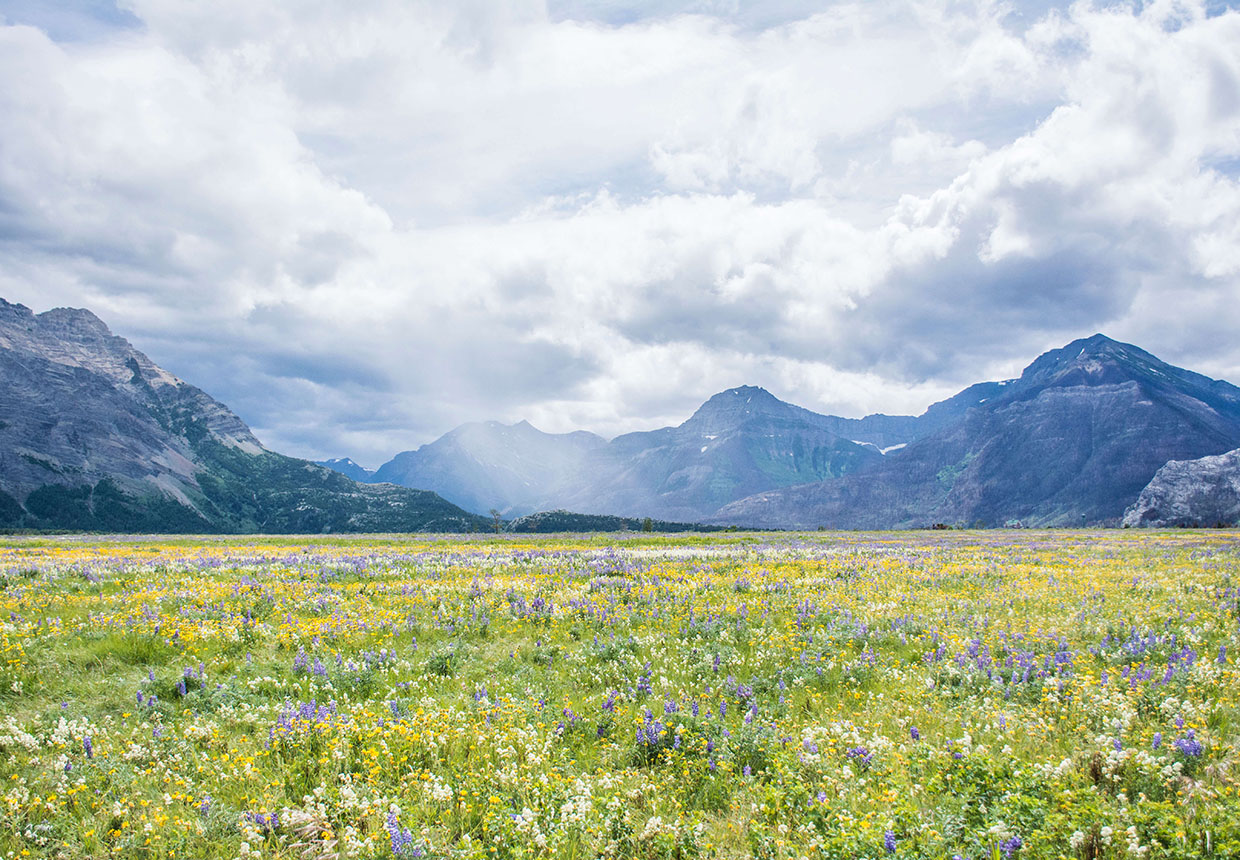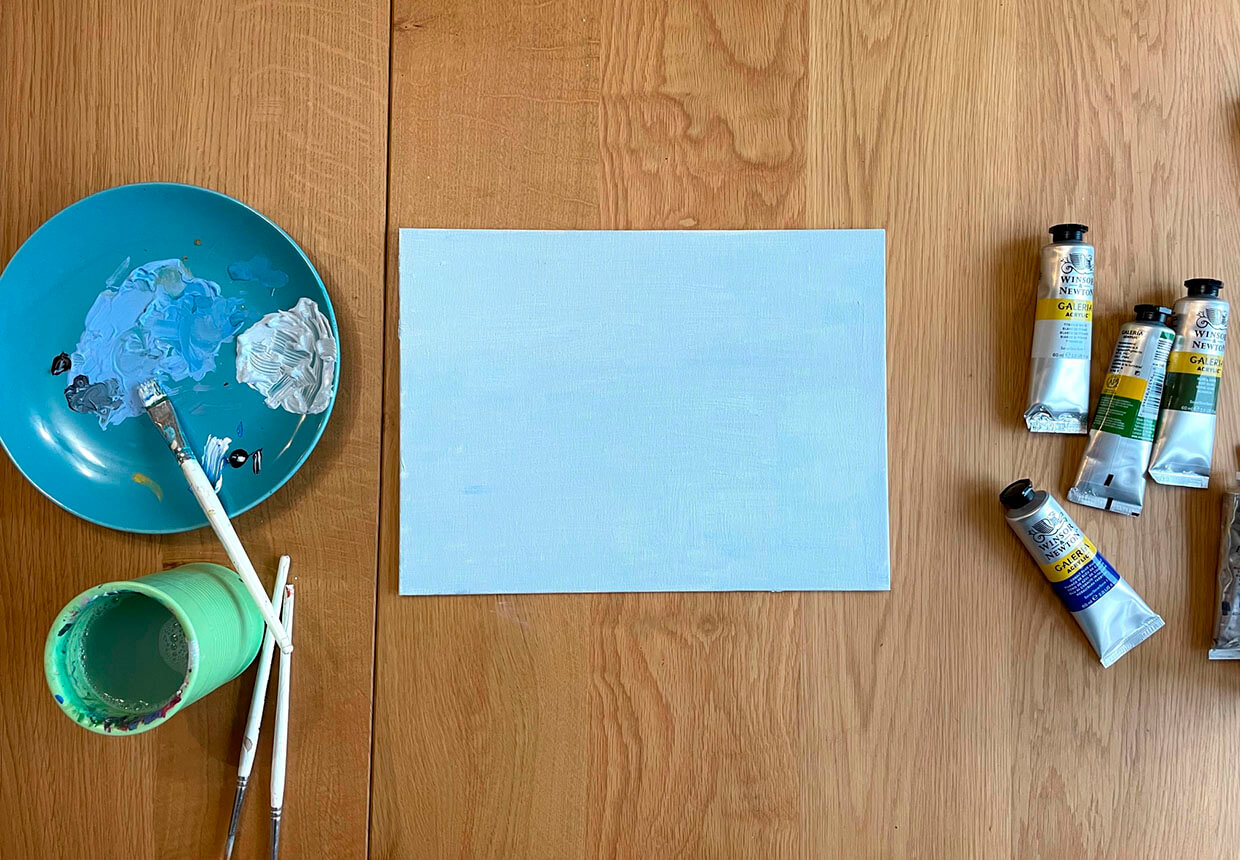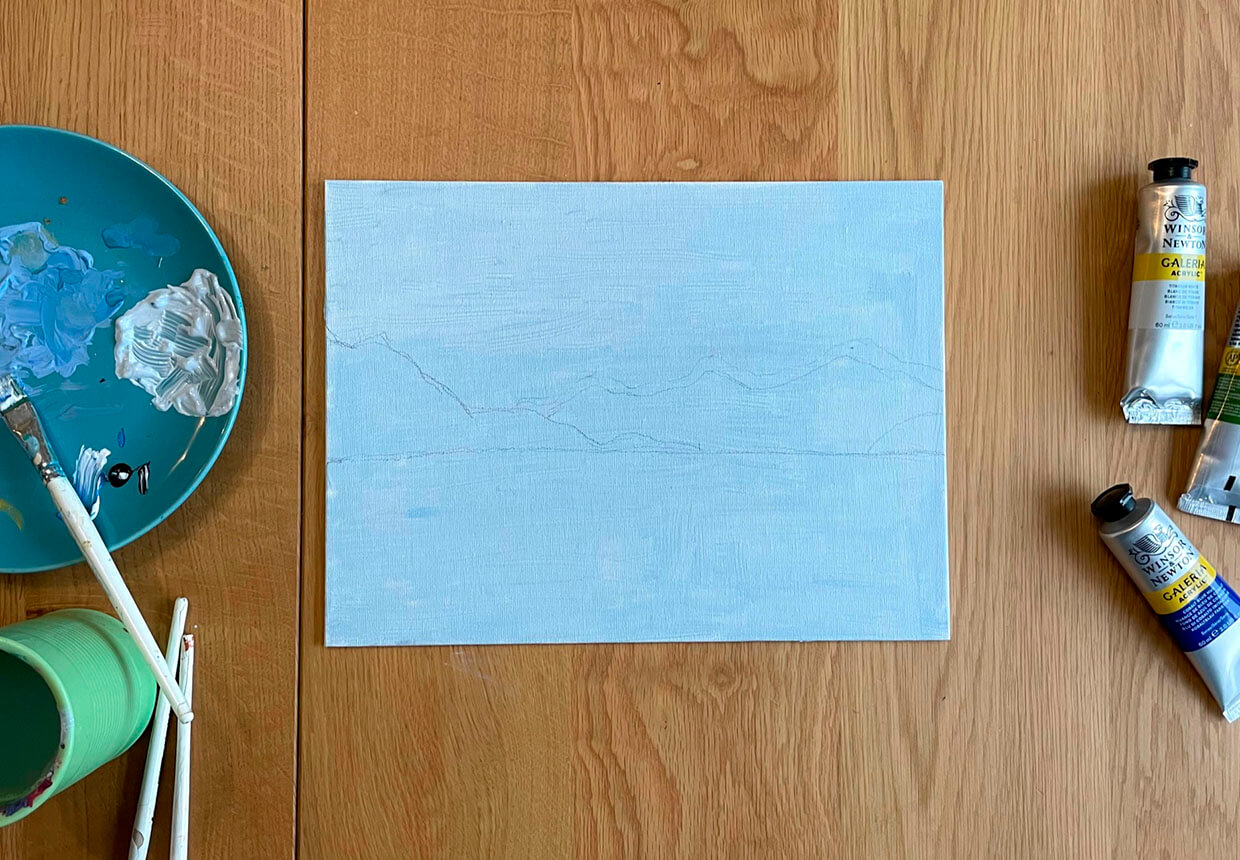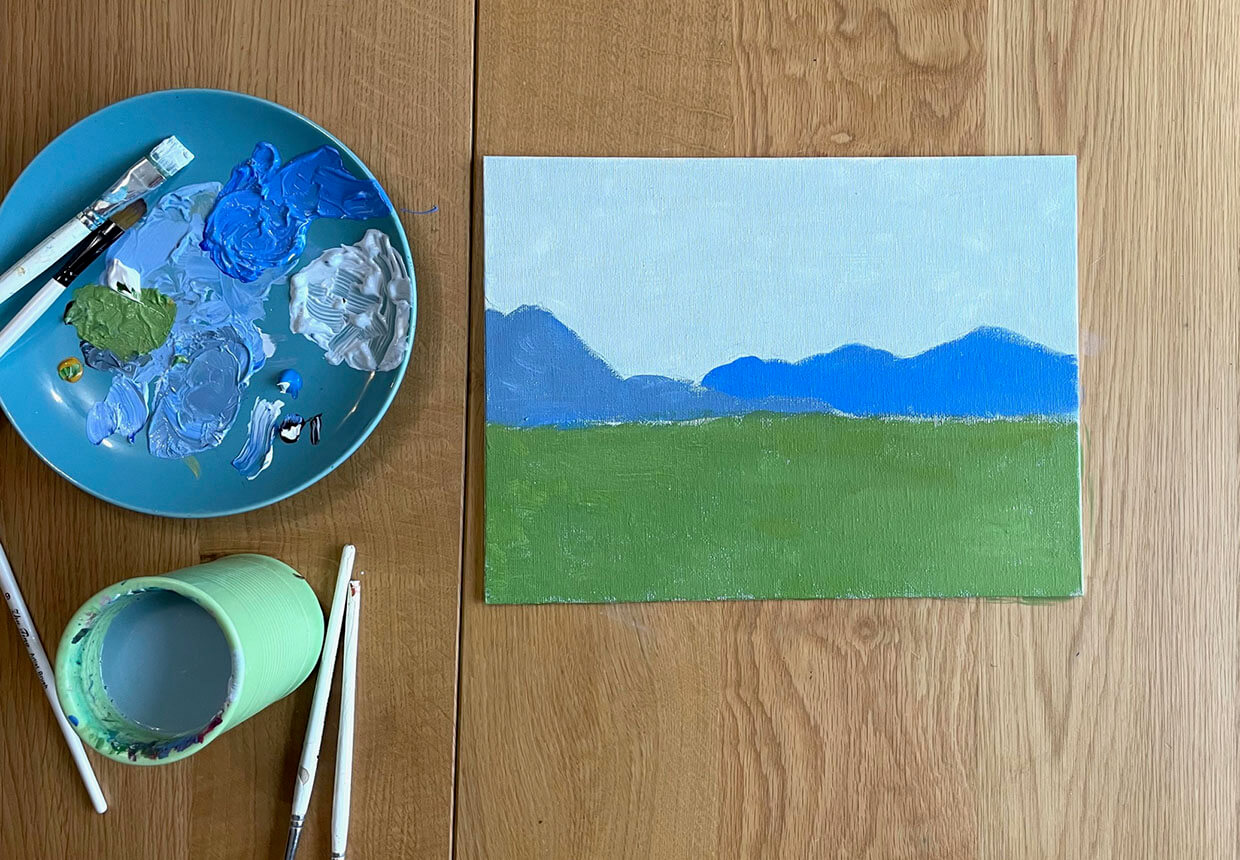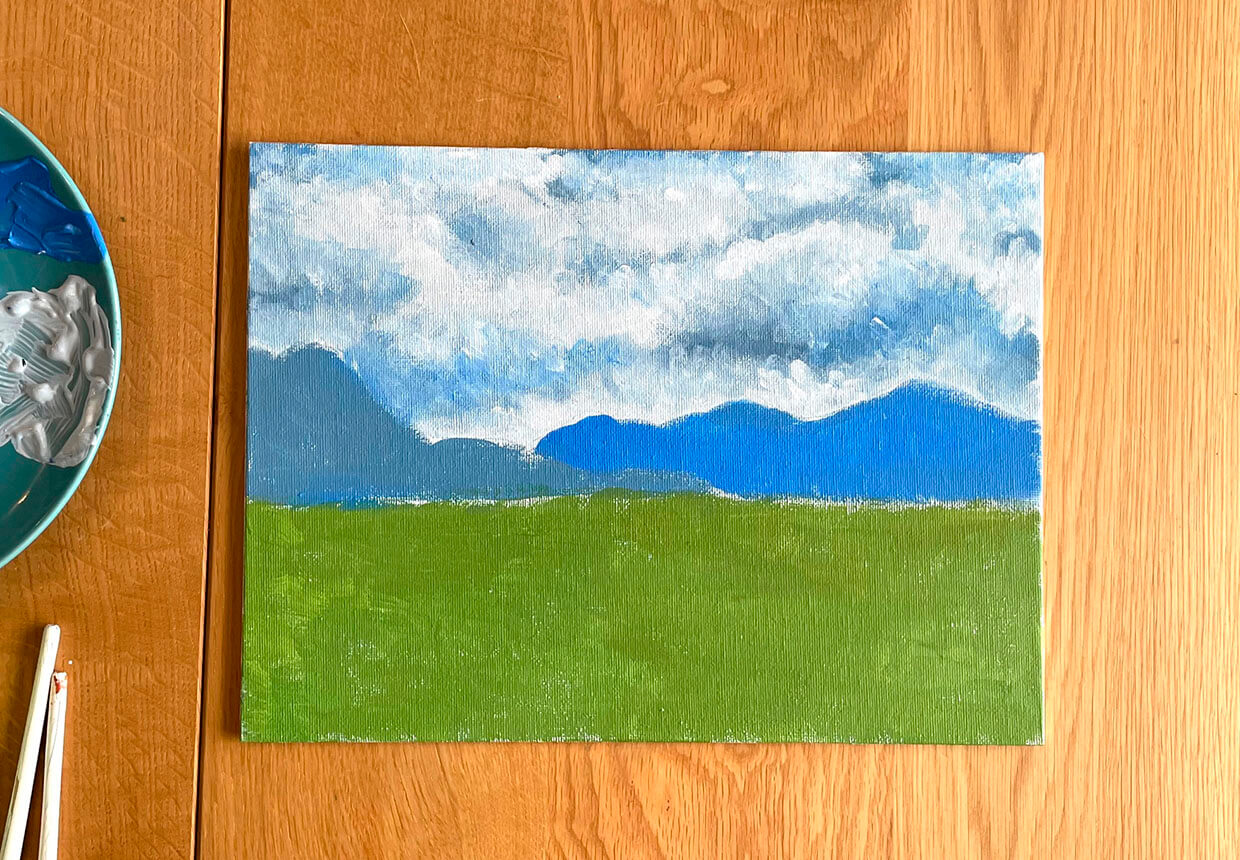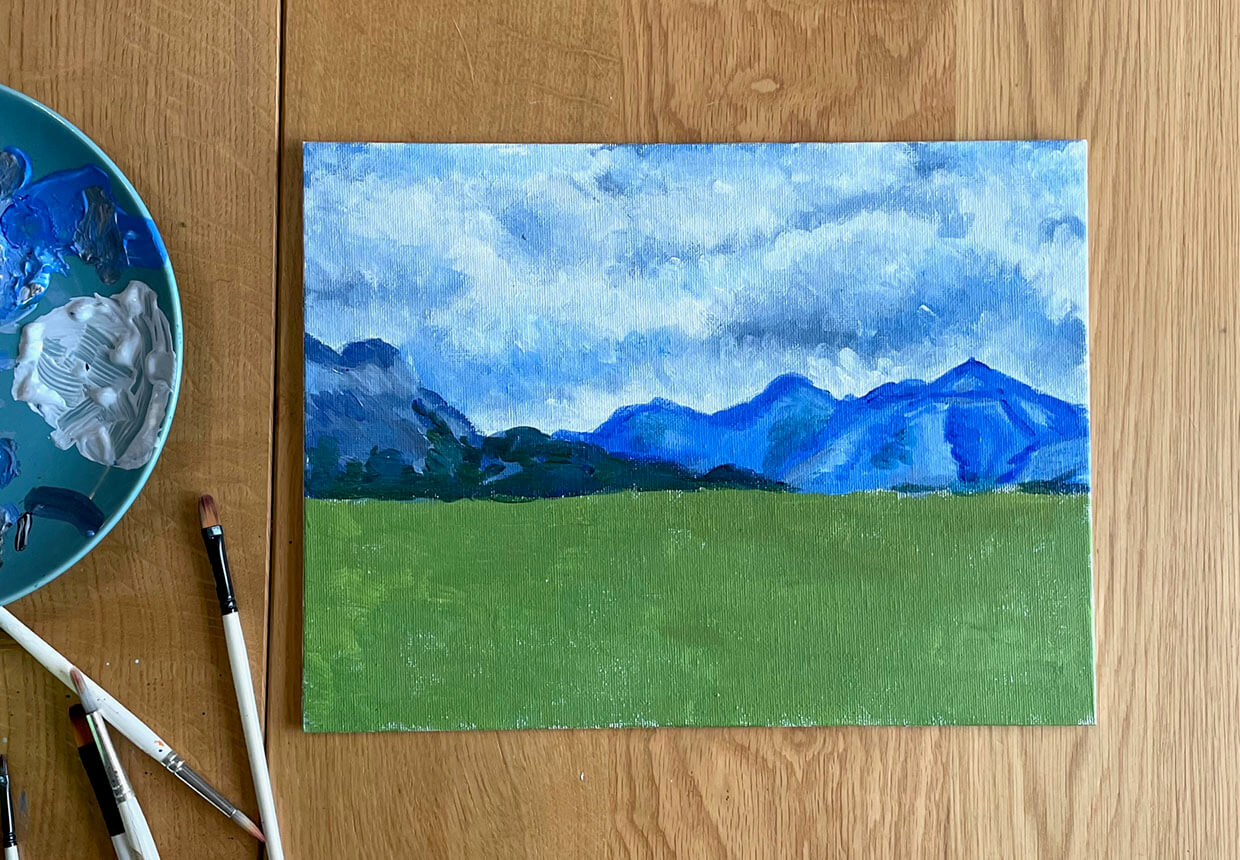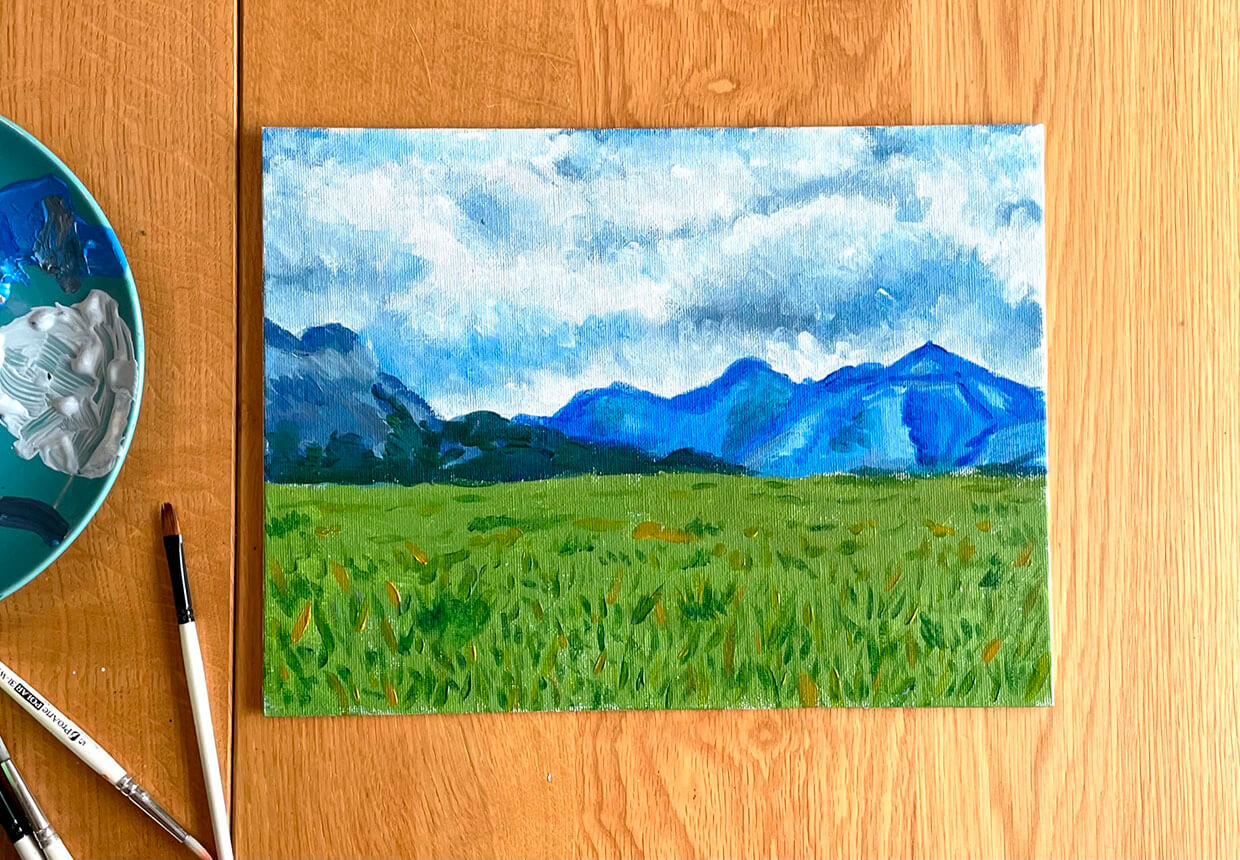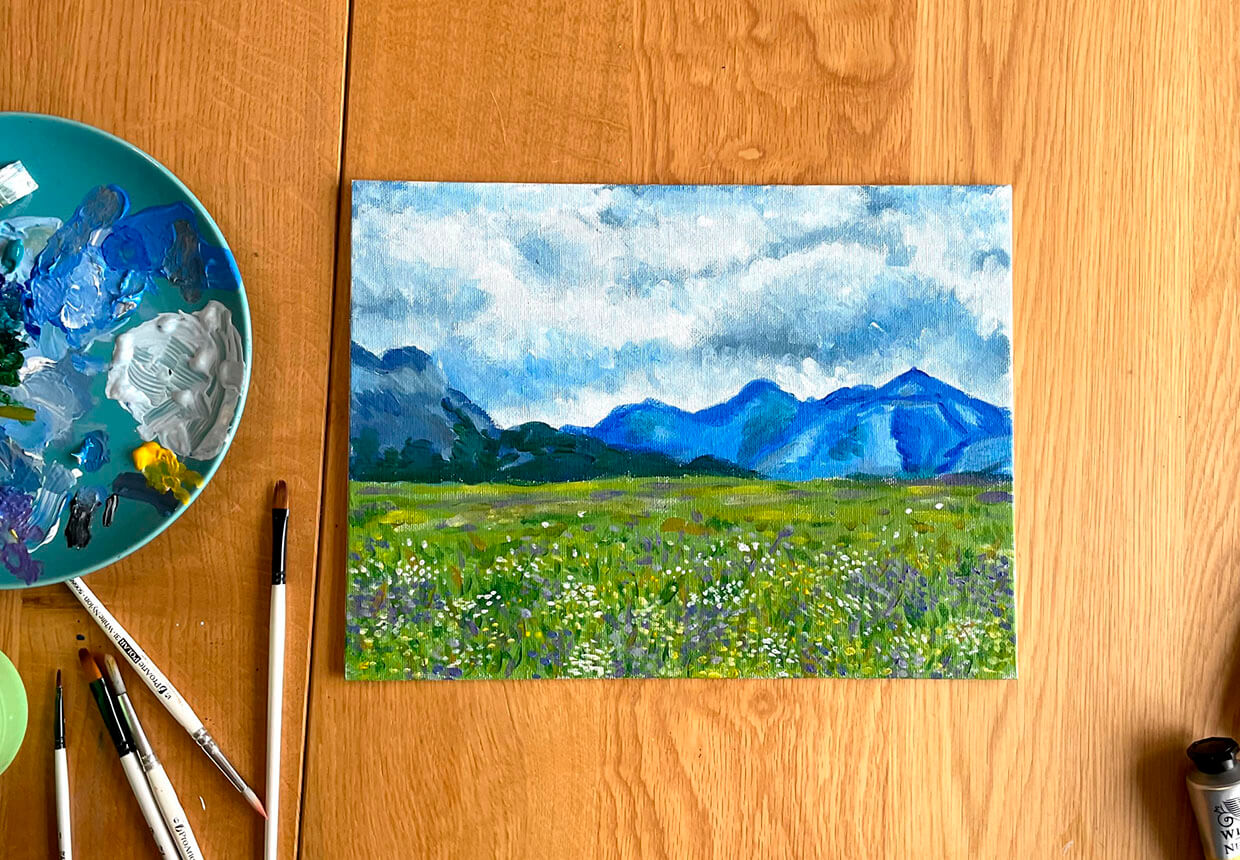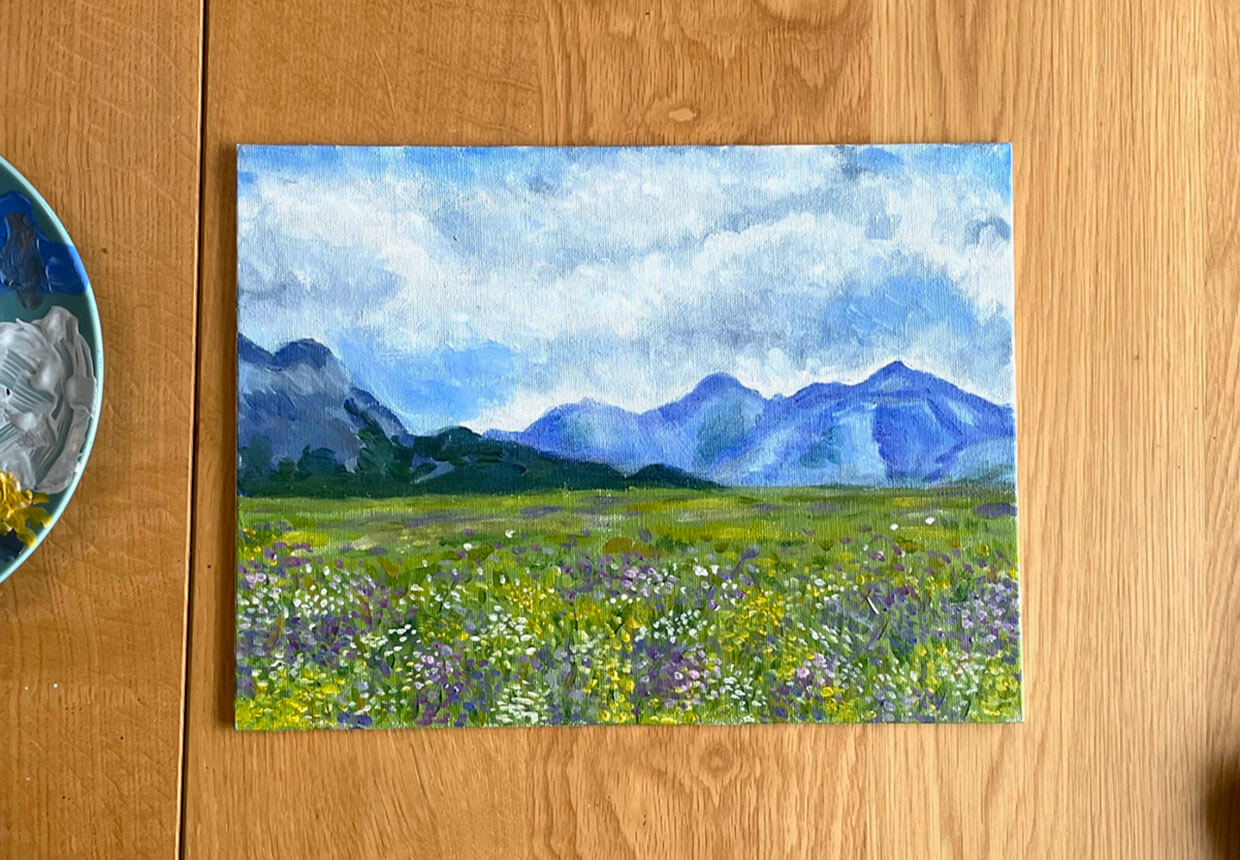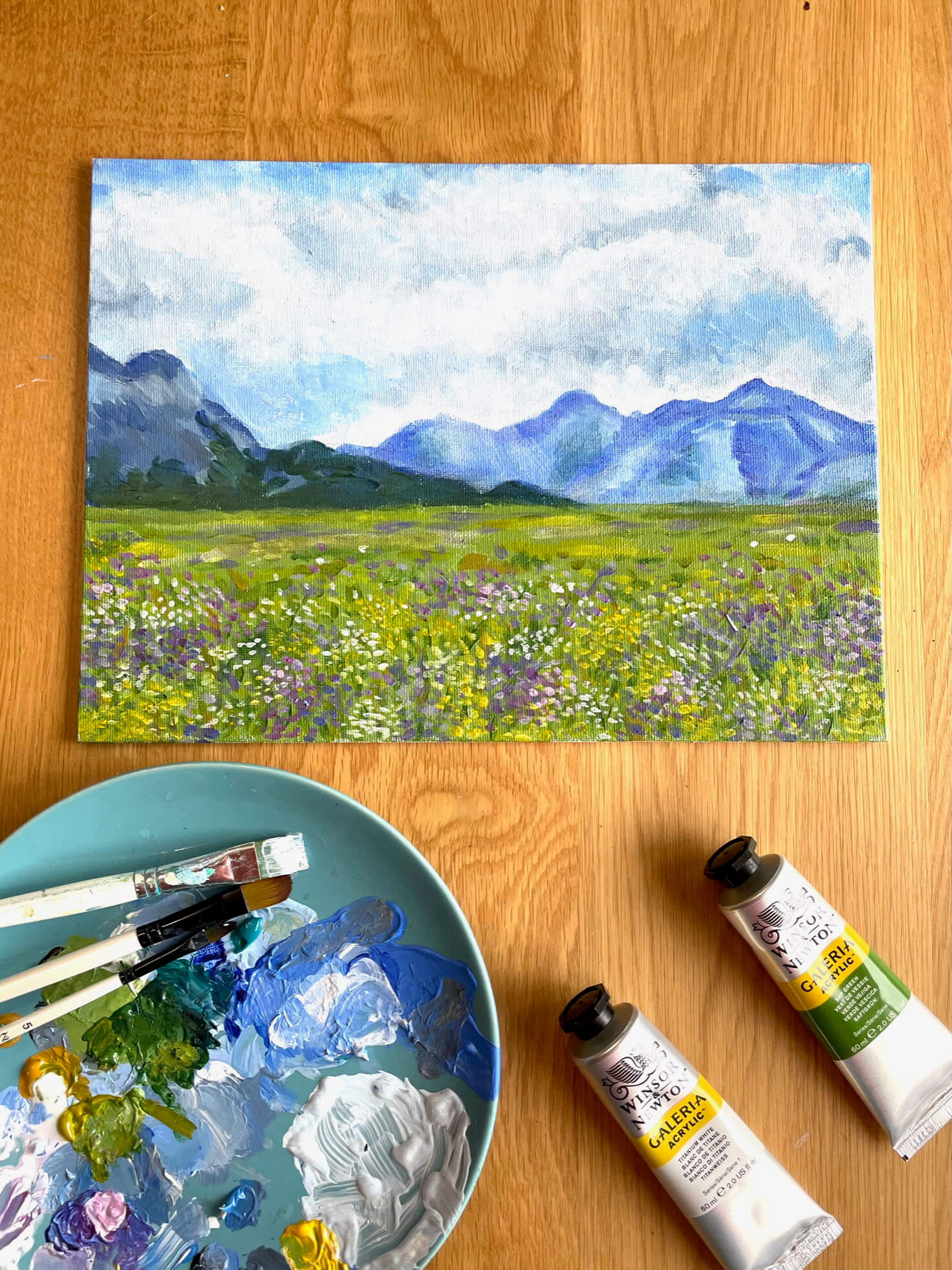Landscapes are a satisfying subject for artists of all levels. They vary enormously from coastal scenes to mountains to deserts – and the same scene can look completely different depending on the time of day or the season. A landscape can look different every time you paint it.
You can paint a landscape en plein air (outdoors) or from a source photo. If you’re fortunate enough to have a great view, you can also paint what’s outside your window. However you prefer to paint, many of the basic techniques and skills remain the same.
Painting landscapes is a good way to hone your skills whether you’re a complete beginner or a seasoned artist. You can use it to improve your blending, gain a greater understanding of tone and colour, and even experiment with new painting styles such as palette knife painting.
Acrylic painting is incredibly versatile and can be used to produce a wide variety of effects. It can be applied thickly to resemble oil paints or thinned so that it behaves more like watercolour paint.
In this guide, we’ll share some landscape painting tips and show you how to create an acrylic landscape painting using a photo as a reference.
Acrylic landscape painting materials
For this landscape painting in acrylic, we’re going to keep things simple and not use too many supplies.
Winsor & Newton Galeria acrylic paint set
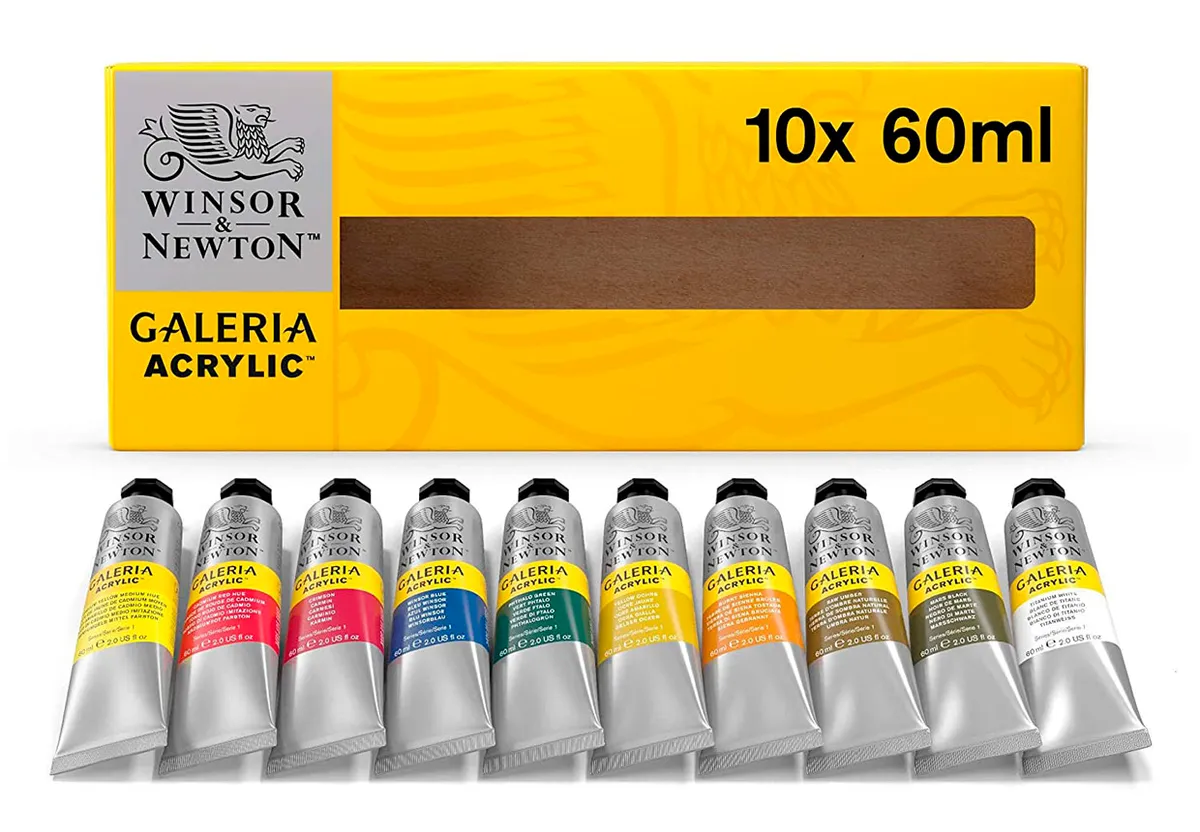
If you’re new to acrylic painting, it’s a good idea to buy a set of paints with a good range of colours. This Winsor & Newton set has all the shades you need to create beautiful landscape paintings.
Winsor & Newton is a brand with a great reputation for quality and its Galeria range provides excellent value for money. For experienced or professional artists, they also produce brilliant professional acrylic paints.
We have more recommendations in our pick of the best acrylic paint sets, so you can find the right ones for your needs.
If you’re not sure whether acrylics or oil paints are best for you, take a look at our acrylic vs oil paints guide to discover the pros and cons of both mediums.
Arteza canvas boards
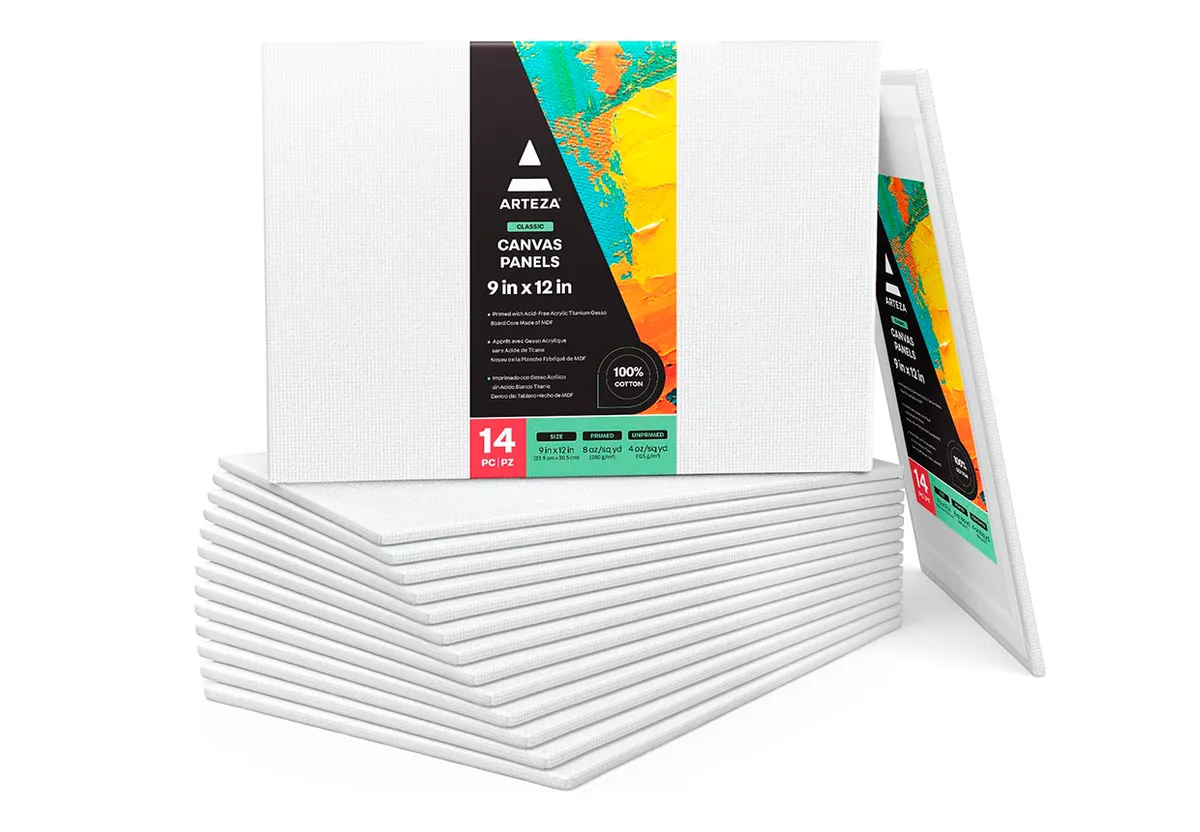
Before you start painting, you need a surface to work on! You can use a canvas for this project or canvas boards.
Canvas boards are a good option if you have limited storage space, as they’re flatter than traditional canvases and can often be bought in multi-packs.
Save time by choosing canvases that have already been primed (check the product description). This means that the canvases are ready to use straight away.
Daler Rowney Graduate paint brushes
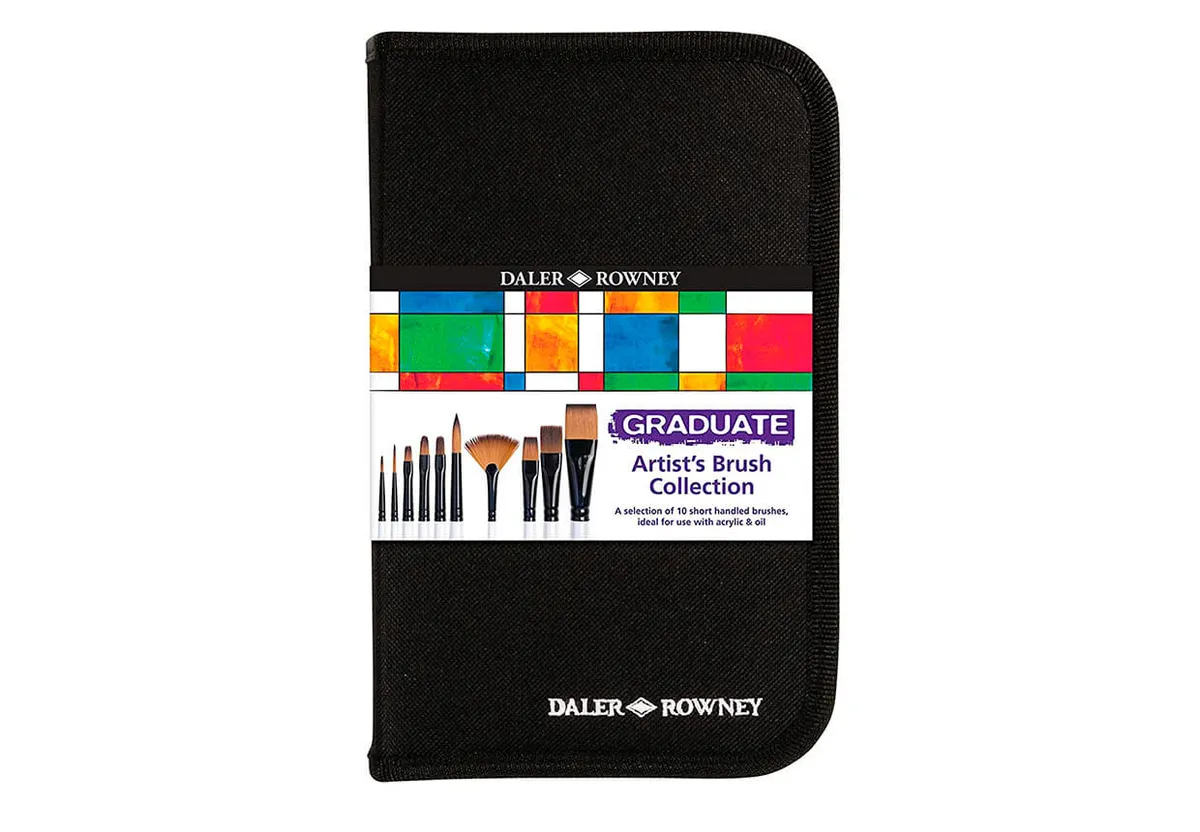
Synthetic brushes are perfect for acrylics because they’re both flexible and resilient. This set created by Daler Rowney contains a selection of different brush shapes, so you’ll be able to achieve a variety of textures in your work.
Keep wet palette (optional)
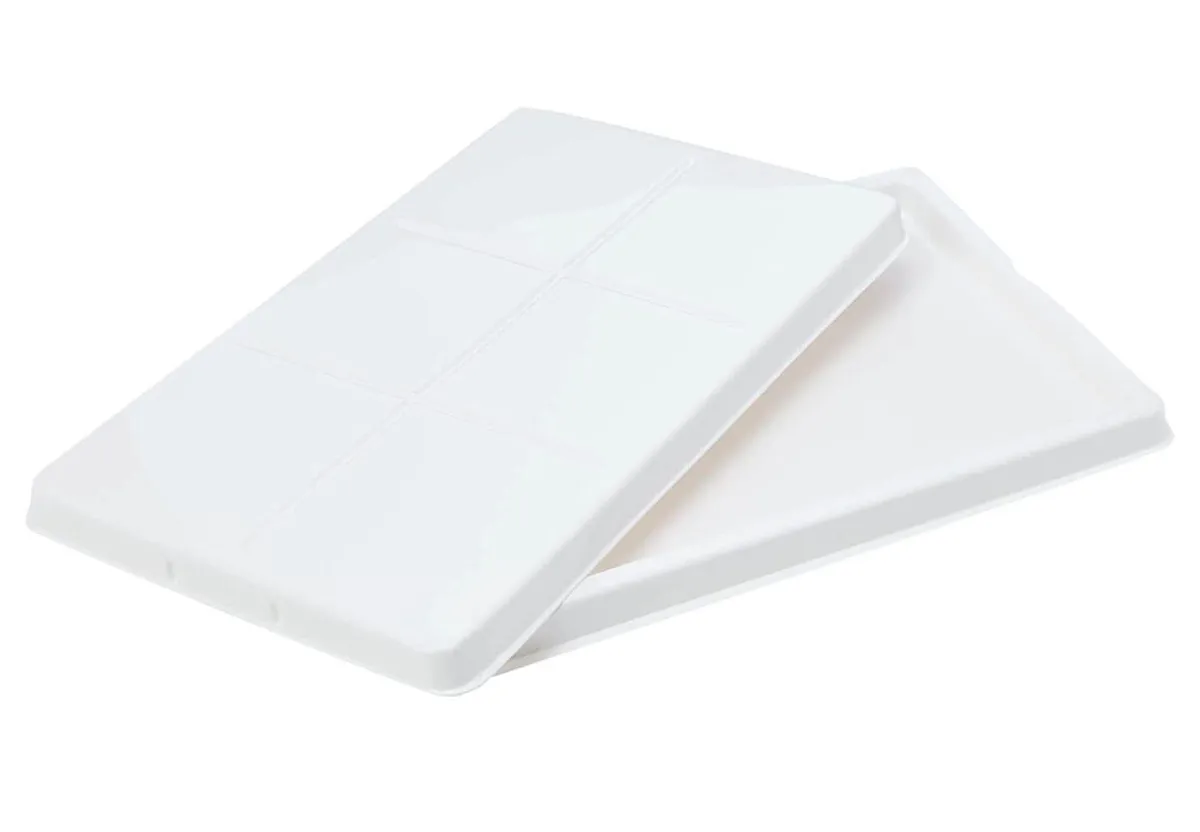
Acrylics are notoriously fast-drying, which is particularly frustrating when you want to work on a painting for a long period of time. Your carefully mixed colours will dry up before you’ve finished using them!
A keep wet (or stay wet) palette is a useful tool for any acrylic artist. It’ll help your paints to stay moist for longer, meaning you can even take a break in the middle of a painting session.
If you are a fast painter you can get away with using traditional paint palettes or even an old plate if you’re likely to complete your art session in a short period of time.
Pebeo Studio Acrylics gesso (optional)
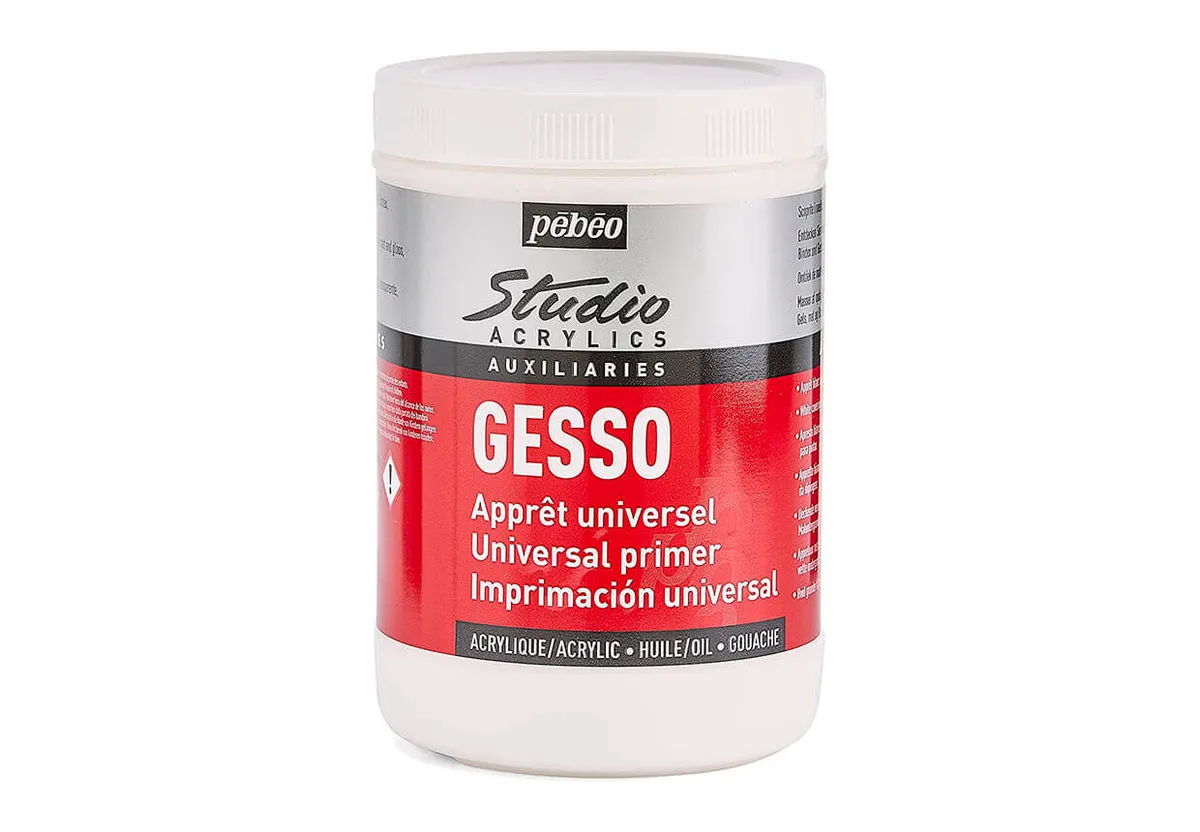
Gesso is used to prepare the surface of your canvas ready for painting, which is called priming. Many canvases can be bought already primed, but you may wish to apply another coat to smooth the surface.
You can even add a little acrylic paint to your gesso to create a tinted background. This is very useful if you’re the kind of painter who feels daunted by a blank white canvas!
Winsor & Newton satin varnish (optional)
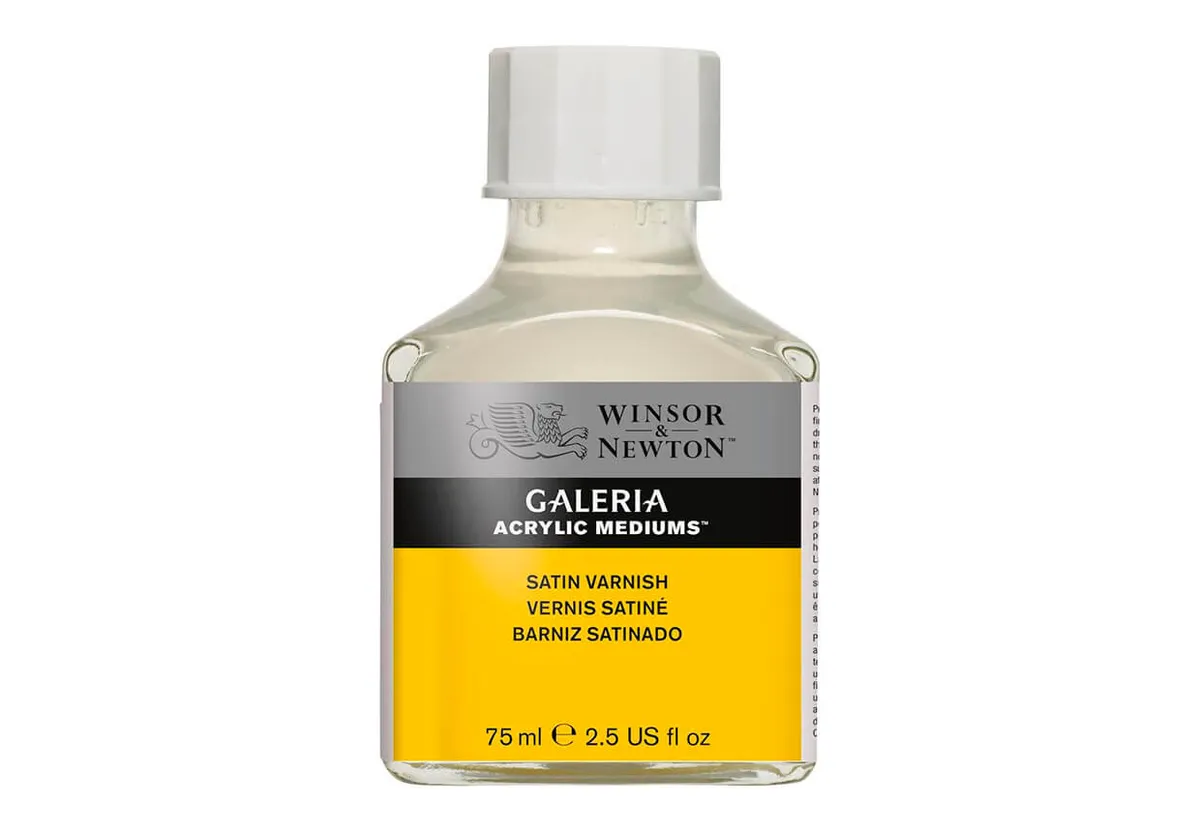
When you’ve finished your painting, consider adding a coat of varnish to protect your masterpiece. You’ll need to wait around six weeks to make sure that your painting has completely dried out before adding the varnish.
Varnishes come in many forms, but we like a satin varnish – it adds a subtle shine to your painting without being too glossy.
